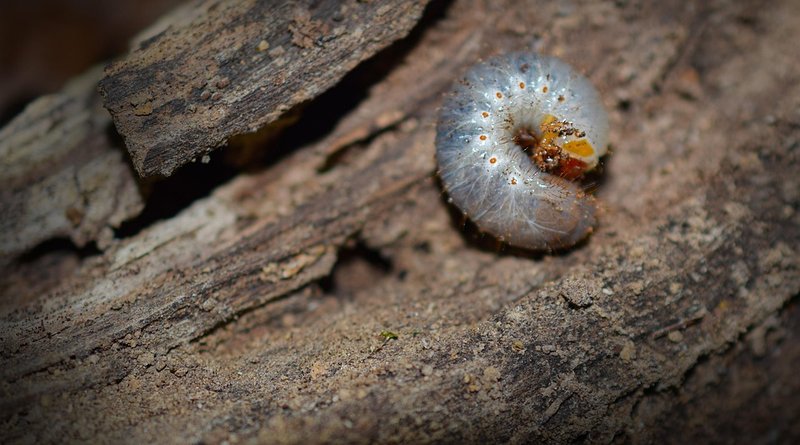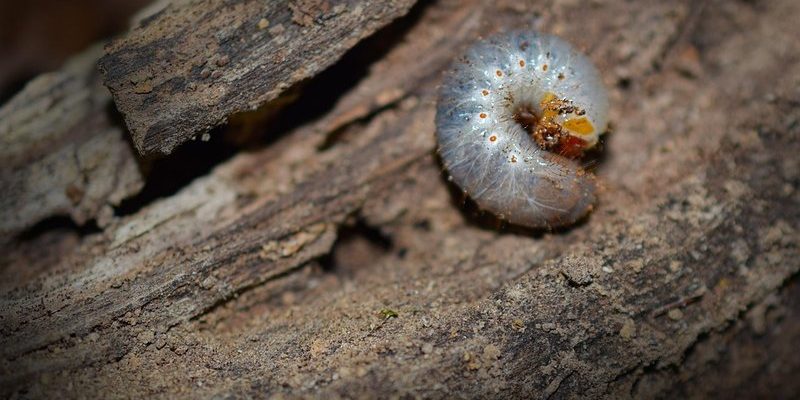
To understand this, let’s dive into the lives of grub worms, which are the larvae of beetles. Think of them as the teenage phase of these insects. They live underground, munching on organic matter, and their numbers can fluctuate based on environmental conditions. When the weather changes, especially with heavy rainfall, it can create a perfect setting for these little guys to thrive. So, let’s explore how rain influences their presence and what it means for your garden or lawn.
What Are Grub Worms?
Grub worms are the larvae of various types of beetles, but the most well-known are the Japanese beetle and the June beetle. These worms are typically white, C-shaped, and have a soft body. They live in the soil, where they feast on grassroots, decaying leaves, and organic material.
Think of them as the cleanup crew of the garden. While they can be helpful to the soil ecosystem, they might also cause problems if their population gets too large. That’s where the rain comes into play. With proper moisture, they can thrive and multiply, leading to an increase in their numbers.
Why Grub Worms Matter
You might be wondering why grub worms get so much attention. Well, while they do play a role in decomposition, they can also be quite destructive. Their appetite for roots can weaken your lawn or garden, leading to uneven patches or dead spots. If you’ve ever pulled back a patch of grass only to find it was barely hanging on due to grub damage, you understand the concern.
Understanding grub worms is about striking a balance. They’re part of the ecosystem, but when it comes to our beautiful lawns, we often want to keep them in check.
How Heavy Rains Affect Grub Worm Populations
So, how do those heavy rains factor into the equation? It all starts with moisture. Grub worms love moisture for a few reasons. First, it aids in their movement through the soil, making it easier for them to find food and each other. Second, rain creates an ideal environment for beetles to lay their eggs in the soil.
When it rains heavily, the moisture seeps into the ground, promoting an increase in the organic matter that grub worms feed on. With a buffet laid out for them, they can multiply quickly. Plus, excess water can push them closer to the surface, making them easier to spot. So yes, if you notice more of these critters after a heavy rain, that’s likely why.
Are All Grub Worms Affected the Same Way?
It’s important to note that not all grub worms respond to rain in the same manner. Different species have various life cycles. Some might breed quickly after a rain, while others may remain dormant. For instance, the Japanese beetle larvae are known to be particularly fond of wet conditions, increasing their chances of thriving after heavy rain.
On the flip side, if the rain is too excessive, it can lead to waterlogged soil, which might drown some grubs. So, it’s like a double-edged sword—there’s potential for both growth and loss, depending on the amount and duration of rainfall.
Signs of Grub Worm Damage
If you suspect grub worms might be taking over your lawn after a heavy rain, it’s good to know what to look for. Here are some classic signs of grub damage:
- Brown patches: If you see areas of grass turning brown despite regular watering, it might be due to grub feeding.
- Pulled-up turf: Healthy grass has strong roots, but if the roots are compromised, you can easily pull up sections of your lawn like a carpet.
- Increased pest activity: More birds and animals in your yard can indicate a higher presence of grubs, as they often dig in the soil to find them.
If any of these signs resonate with you, it’s time to investigate further.
How to Check for Grub Worms
To check for grub worms, you can conduct a simple test:
1. **Select a patch of grass:** A 1-foot by 1-foot square is ideal.
2. **Lift the grass and soil:** Use a spade or your hands to gently lift the turf.
3. **Look for grubs:** Check the roots and soil beneath. If you see 10 or more grubs in this area, it’s time to take action.
This method gives you a snapshot of your garden’s health and whether it’s suffering from grub worm overpopulation.
Managing Grub Worm Populations
If you discover that your lawn has too many grubs, don’t fret. There are several ways to manage them effectively:
1. **Natural predators:** Encourage birds or beneficial insects that feed on grubs by creating habitats for them. Planting native flowers can attract these helpful guests.
2. **Nematodes:** These are microscopic worms that naturally target grubs in the soil. Applying them when the soil is moist can help control the grub population without harmful chemicals.
3. **Chemical treatments:** If the infestation is severe, you might consider pesticides specifically designed for grub control. Be cautious, though—always follow the instructions and consider the potential impact on beneficial insects.
It’s always worth starting with the gentler methods before moving onto more drastic measures.
Timing Matters
Timing is crucial when it comes to managing grub worms. Applying treatments during the late summer to early fall is usually most effective. This will target the young larvae before they can mature and cause further damage. The goal is to interrupt their life cycle before they can breed again after the rains.
The Bottom Line on Grub Worms and Rain
In summary, heavy rains can indeed lead to a spike in grub worm populations. The moisture creates a perfect environment for their growth and can make them more visible. While they play an essential role in the garden ecosystem, too many grubs can wreak havoc on your lawn.
By understanding their behavior and monitoring your garden, you can manage their presence effectively. Remember, it’s all about balance. Nature has its way of regulating these critters, but a little awareness and action on your part can ensure your lawn stays lush and healthy—even after the heaviest of rains.
In the end, whether you see these little pests as friends or foes, just know that with a little vigilance, you can keep your garden thriving amidst the challenges that come with rainy days.

